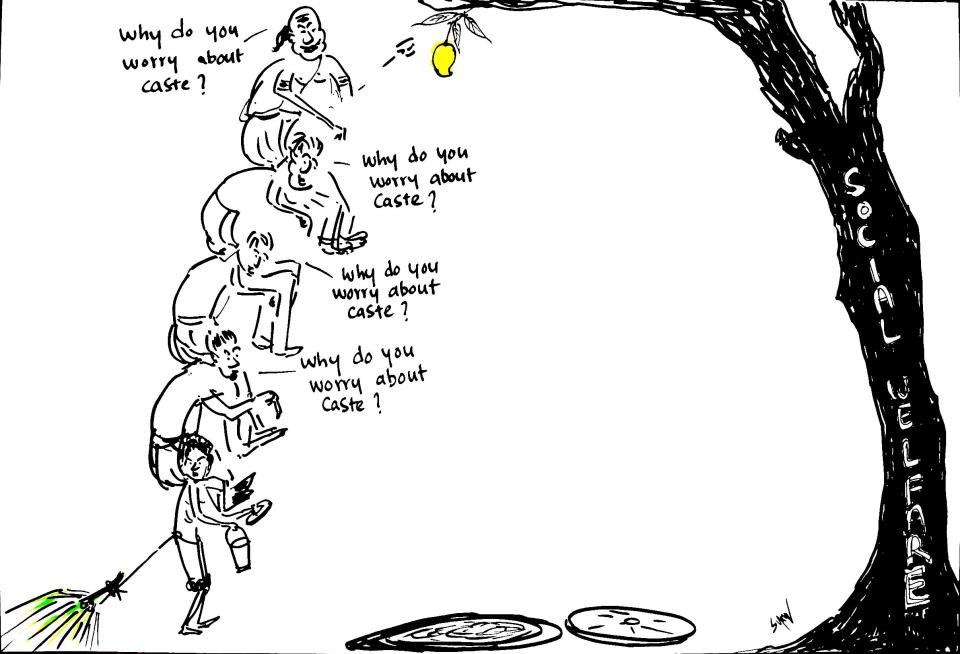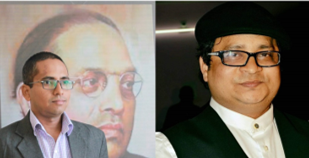Rajendra Yadav (1929–2013): Defying Dominance in Life and Letters
Braj Ranjan Mani
Rajendra Yadav, the leading Hindi writer and public intellectual, remained creative and combative till his 84-year-old body snuffed out his life. Irrepressible— editing (a popular monthly Hans), writing, dialoguing with friends and adversaries alike— till the very end, his name evoked a strong response in the Hindi public sphere. Praised (by the emergent dalit-bahujan writers) and despised (by the entrenched custodians of Sanskritic tradition) in an equal measure, he was the most talked about Hindi author of the last 25 years or so.

Of late, Rajendra Yadav was known more as a social commentator than a literary giant who injected a new sensibility into Hindi fiction through many acclaimed works. In the 1950s and ’60s, along with Mohan Rakesh and Kamleshwar, he was in the forefront of the Nai Kahani (New Story) movement which brought a ‘New Wave’ to modern Hindi fiction. His novels Sara Aakash and Ukhare Hue Log and short stories such as Jahan Lakshmi Kaid Hai and Chhote Chhote Tajmahal set a new benchmark of literary excellence and acquired the status of contemporary classics.
Rajendra Yadav wrote many memorable short stories, but the best of him comes in his novels. His Sara Aakash (The Entire Sky), which has been made into a riveting film by Basu Chatterji, was the first Hindi work which attempted to jolt the fabled Bharatiya Sanskriti (Indian culture) out of its smug stupor. Samar of Sara Aakash is not a rebel but his doubts and dilemmas powerfully capture the closed, claustrophobic world of a lower-middle-class youth, raising many shattering questions about some of our most cherished—and oppressive—values. Ukhare Hue Log (The Uprooted People), another landmark novel, shows how social circumstances compel the not-so-bad individuals to take the road so rotten. It is the moving story of a couple who are forced to desert the virtuous path, yet are unable to acclimatise to the compromised life. Ek Inch Muskaan, written with Mannu Bhandari, is a love tragedy of two fragmented souls. Amar and Amala, entrapped in a love-and-loveless-love intrigue, are unable to come out of their angst and self-alienation.
In these and his other writings Rajendra Yadav not only confronts conventional—rotten—views and values, but also gets under the skin of their newer, subtler incarnations. His works strive, above all, to dig out the larger social truth through merciless delineation of his characters. Dissecting to the bare bones the emotional and biological needs of the individual, he tries to map the human mind, and in this process, lays bare, in luminous prose, the aspirations, struggles and frustrations of the small-town characters. With an eye for the hidden, he creates earthy metaphors with devastating effect without losing sight of the big picture, and his graphic description lends authenticity to the life and times he creates.
Rajendra Yadav also authored many offbeat reminiscences—collected in telling titles such as Auron Ke Bahaane (Through the Others), Ve Devata Nahin Hain (They are Not Gods), and Mud Mud Ke Dekhata Huun (Looking Back Yet Again). These fragments of memories bring out his sharp critical acumen as he strips bare himself and many of his friends as if they are fictional characters. In these superbly written biographical cameos, he comes across as an enchanting chronicler of many of his famous writer-friends such as Mohan Rakesh, Kamleshwar, Ajneya, and Ram Vilas Sharma. He sees them and himself as a detached observer, mocking many carefully crafted images they themselves and others have perpetuated. Exposing the molestation of truth wherever he finds it, he does not spare himself either. In Mud Mud Ke Dekhata Huun, his autobiographical statement, he exhibits the same funky spirit to unravel his troubled, tottering relationship with his wife and some other women, knowing well that in making these private things public he is not covering himself with glory.
To his credit, save a brief association with a literary journal Gyanodaya, Rajendra Yadav never did any naukari (job). After his university education from his home town Agra, he spent ten struggling years as a writer in Calcutta before finally settling down in Delhi with his wife Mannu Bhandari, an illustrious writer in her own right.
From the 1980s onwards, Rajendra Yadav reinvented himself, shifting his attention to direct social criticism and commentary. A champion of intellectual freedom which he reckoned could only be secured in a democratic and secular society, he often took on the forces, especially the Hindutva politics, which he saw as a threat to free society. Written in the in-your-face style and brimming with rapier wits, his devastating views on various aspects of religion, politics, caste and gender saw him in the eye of many literary and not-so-literary storms. His wide-ranging concerns and their provocative articulations landed him in many controversies, and even his fellow-travellers, at times, found it difficult to stand by him.
Since 1986 till his very last, Rajendra Yadav’s life revolved around Hans, originally founded and edited by Premchand. Over the years Hans emerged as the foremost Hindi journal of short stories, which also carried a sustained and spirited debate on the marginalised— the women, dalit-bahujans and Muslims— and their negligible representation in the realm of power, culture and literature. Especially his editorial column ‘Teri Meri Uski Baat’ raised such issues powerfully, challenging what he loved to call the ‘elitist gobbledegook’ on society and culture. Several collections of his editorials have been published in the series Kaante Ki Baat, running into several reprints.
While these writings and trenchant comments and essays on the pages of Hans attracted vituperative comments from the purists and elitists who saw in such ‘non-literary’ and ‘low’ enterprise the ultimate defilement of the sacred realm of literature, the up-and-coming subaltern writers seized the opportunity to ventilate their long-suppressed voices. Rajendra Yadav hated compromise with mediocrity in literature, but would go out of his way to promote struggling writers from struggling backgrounds, especially dalits and women. Many such writer-activists cut their literary teeth on the pages of Hans. This earned him popularity among the dalit-subaltern and women writers, but also made him an object of ridicule for the jealous custodians of the Hindi–Hindu culture.
While the debate between the entrenched elites and their dalit-bahujan challengers still rages, the Hans showed that the subalterns could speak (if given even half-a-chance), and by doing so ensured the beginning of the end of hegemonic culture, at least in the Hindi literary sphere. Now, the universities and cultural institutions in the north, the bastion of brahmanic conservatism, are coming under increasing attack from the hitherto suppressed and silenced sections of society. Rajendra Yadav and his Hans played a crucial role in bringing about this remarkable turnaround.
Would his legacy of giving voice to the voiceless in the literary–cultural domain outlive Rajendra Yadav’s contribution as a creative writer? The answer, going by a large number of his admirers who are mourning his death all over the Hindi-speaking states, seems to be an unambiguous yes.
~~~
Braj Ranjan Mani, a non-institutional scholar, is the author of ‘Debrahmanising History: Dominance and Resistance in Indian Society’ (2005). Manohar has recently published Mani’s new book ‘Knowledge and Power: A Discourse for Transformation’.
[Image courtesy: the internet]









